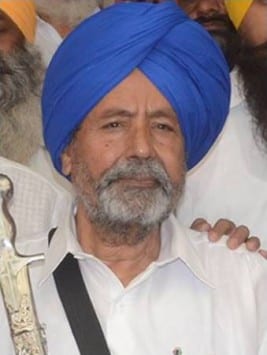


August 24, 1941 to June 11, 2014
While S. Harbhajan Singh Lakha is no longer present among us, his words echo in our ears ,”I was born as Hindu, but won’t die as one.” These words cause a shiver to run through every sensitive Sikh as God almighty fulfilled his last wish to become initiated as an Amritdhari Sikh. Just four days ago, he took Amrit from the Panj Pyare, five beloveds of Guru, on the historical day of June 6th. He chose the day consciously, as as he wanted to give proper respect to Sant Jarnail Singh Bhindranwale, and other Sikhs martyred fighting against Indian army on the historical day of June 1984 .
His second wish was to bring members of Dalit community into the fold of Sikhi. Although his second wish could not be fulfilled, he inspired many of them to have belief in a religion which gives the message of “En Gareeb Sikhan Ko Deo Patshahi’ (Guru will give supreme authority to financially weak, but true Sikhs).
On the previous evening to his sad demise, he talked on phone to Jathedar Balwant Singh Nandgarh, the Jathedar of Takht Sri Damdama Sahib Talwandi Sabo, and told him that some members of the Dalit community based in Rajasthan want to become Sikhs and receive Amrit. This shows how much he wanted to launch a campaign to bring Dalit people into the fold of Sikhism.
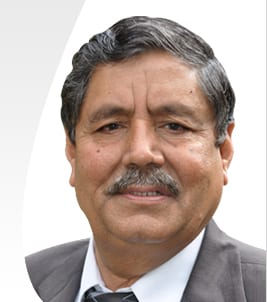


Harbhajan Singh was born on August 25, 1941 in the village of Karnana located in the City of Nawanshahr in the State of Punjab. A naturally intelligent student, he was the first man in his family to receive an education after having worked in a brick factory at a young age. Despite various obstacles, he successfully completed his education and graduated in 1968 with a bachelor’s degree in Electrical Engineering Aircraft Aviation. Harbhajan Singh then joined the Indian Air Force in 1961 as an electrician, and was stationed in numerous locations around India. He resigned after 15 years of service in 1976, and was soon hired as an electrical engineer in civil aviation at the Safdarjung Airport in New Delhi.
Kanshi Ram visited him at his house in 1977 with a notion to start a self respect movement with a goal of ending the thousand year-old Manuwadi system in India whereby low caste Hindus are deprived of basic human rights which are secured only for upper caste Hindus. Being a firm believer in equality and human rights, it did not take Harbhajan Singh much convincing before he t quit his government job and joined the movement.
Having just entered the political arena, the Bahujan Samaj Party (BSP) wasted no time. BSP contested Nawanshahr Punjab Legislative Assembly elections and did extremely well, receiving 18 thousand votes. It was a successful campaign following which Harbhajan Singh was made the BSP general secretary of Punjab. He was given full responsibility of running the movement and appointing BSP district heads. His swift rise in politics continued and eventually resulted in his being appointed as BSP’s first Member of Parliament in 1989, the 9th lok sabha, and also being re-elected for 11th lok sabha in 1996.
Bhai Harpal Singh Cheema, acting president of Shiromani Akali Dal (Panch Pardhani) said that Harbajan frequently visited Canada and held discussions with human rights activist Harkirat Singh and others at Gurdwara Dashmesh Darbar. Very much impressed by Sikh principals preached at Canada based Gurdwaras, including Gurdwara Dashmesh Darbar, Harbajan prepared himself becoming Singh.
Bhai Cheema said that When he met Harbajan Singh at Banga on June 3, 2014, he told him, “I want to form an organization using the name of Sant Jarnail Singh Bindranwale to engage Dalits with Sikhism.”
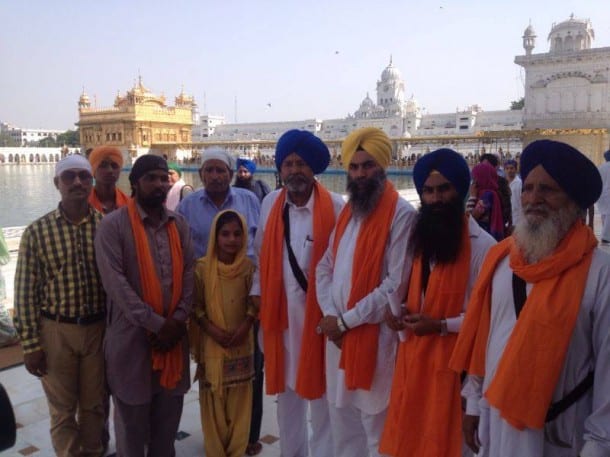


“He frequently shared his inner feelings with me that he born as a Hindu, but he would like to die as a Sikh. He also said Dr. B.R. Ambedkar had decided to join Sikhism, but capitalist Sikhs retrained him from doing so,” Bhai Cheema explained.


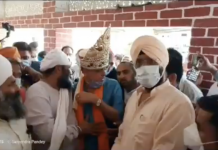
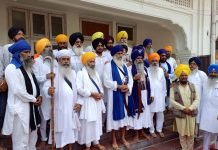

Indeed, Dr. Ambedkar went to Amritsar in 1936 with his proposal to convert 60 million Dalits to Sikhism, his first choice religion. The Sikh leadership, including Master Tara Singh, a high caste, had been advised by Gandhi and the Brahmin leaders to reject the proposed conversion as that would shift the monopoly of power from the higher caste Sikhs to the new Dalit Sikhs. Gandhi and the Brahmins also did not want the message of casteless society advocated by Sikhism to spread to the rest of India – the land of caste, to which Gandhi and Brahminical forces subscribed.
If the Sikhs had accepted the proposal at that time, today Sikhs would have numbered 250 to 300 million, and would have had lot of clout in all power structures, and what had happened to them in 1984 would probably never would have happened. Furthermore, if they had accepted the conversion, their demand for autonomy would have had a more realistic chance of being met. More still, the Sikh slogan ‘Raj Karega Khalsa’ would have become real by capturing political power in the new democratic India.
Apparently, the Sikh leadership was not interested in expansion of Sikhism to India as they were blinded by their selfish interest, and not the interest of Sikhism. They feared, that they would lose all control and power to the new Dalit Sikhs. If only the Sikhs leaders had followed the true agenda of Guru Govind Singh of a new casteless society in India; the Guru had hoped that his Khalsa contagion would spread rapidly throughout India especially amongst victims of the caste system (the lower castes i.e. the shudra varna who form nearly 80% of India’s population).
This was a great loss to Sikhism. The Sikhs had one chance to expand their religion out of Punjab to the rest of India, and they have lost that chance. Sikhism has become a stunted religion as a result without any missionary zeal, restricted to Punjab and largely a hereditary religion with no new conversions at national or international level. This was a great achievement for the Brahminical forces as they did not want Sikhism to spread to rest of India and threaten the hegemony of Brahmins and the Brahminical system in India. The Guru’s in their infinite wisdom wanted Sikhism to be a India wide religion but the Sikh leaders at the time lacked that wisdom but had put their own agenda, above the agenda and the vision of the Guru’s.
All those who have known or know Sardar Harbhajan Singh Khalsa, ex -M.P, will agree that he was a true Sikh and a true Sikh missionary, who loved the massage of The Guru’s and Guru Granth Sahib. His ultimate desire was to join the Khalsa, a casteless order. He, also, desired that the Dalits, who suffer so much injustice under Hinduism and its caste system, should seek refuge in Sikhism, which will give them protection against suffering and oppression.
wahe guru ji ka Khalsa wahe guru ji ki fateh.
Harmesh Singh Lakha, UK
Many Dalit leaders have tried to embrace Sikhism to th utmost level, however the supreme Jatt Sikhs who have hijacked Sikhism have again again refused to accept them in Sikhi, fearing they will overun them one as leaders of Sikhs. FYI- I am not a dalit nor a jatt.